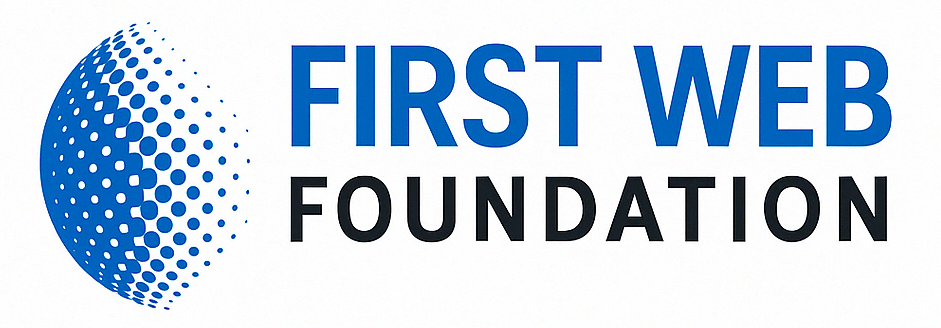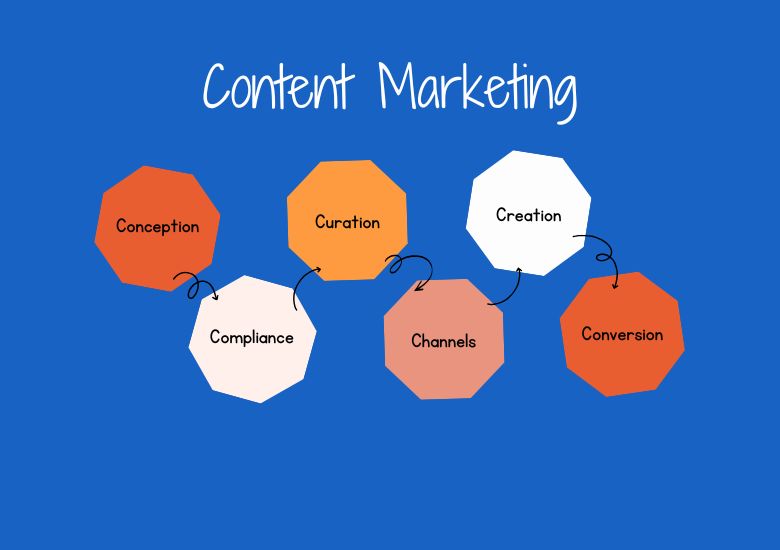Are you a nonprofit organization looking to make a big impact in the digital world? Look no further! In this comprehensive guide, we will explore the ins and outs of digital marketing specifically tailored for nonprofits. From social media strategies to effective email campaigns, we’ve got you covered.
Whether you’re new to the digital marketing game or a seasoned pro, this article is filled with valuable resources to help your nonprofit thrive and reach new heights in the online realm. So grab a cup of coffee, get cozy, and let’s dive into the exciting world of digital marketing for nonprofits!
1. Understanding Digital Marketing for Nonprofits
1.1 What is Digital Marketing?
Digital marketing refers to the use of various digital channels and strategies to reach and engage with a target audience in order to promote products, services, or causes. It encompasses a wide range of tactics, including social media marketing, email marketing, content marketing, search engine optimization (SEO), and paid advertising, among others.
For nonprofits, digital marketing presents a unique opportunity to raise awareness, drive donations, and engage with supporters on a larger scale than traditional marketing methods alone.
1.2 Importance of Digital Marketing for Nonprofits
Digital marketing is of utmost importance for nonprofits as it allows them to amplify their message and expand their reach to a larger audience online. By leveraging digital platforms and tools, nonprofits can effectively communicate their mission, engage with their supporters, and inspire action.
Additionally, digital marketing offers a cost-effective way for nonprofits to connect with potential donors and cultivate long-term relationships with their audience. By utilizing the power of the internet, nonprofits can create a strong online presence and ultimately achieve their organizational goals.
1.3 Key Differences in Digital Marketing for Nonprofits
While the basic principles of digital marketing apply to both nonprofits and for-profit organizations, there are some key differences to consider when developing a digital marketing strategy for nonprofits.
Nonprofits often have limited budgets and resources, making it crucial to prioritize the most impactful channels and tactics. Additionally, nonprofits rely heavily on building trust and establishing emotional connections with their audience, as their success often hinges on the support and involvement of their donors and volunteers.
Understanding these unique challenges and tailoring digital marketing efforts to address them is essential for nonprofit organizations.
2. Developing a Digital Marketing Strategy
2.1 Setting Clear Goals and Objectives
The first step in developing a digital marketing strategy for nonprofits is setting clear and specific goals and objectives. These goals should align with the overall mission and vision of the organization. Examples of goals for nonprofits may include increasing brand awareness, attracting new donors, or driving volunteer sign-ups. By clearly defining these goals, nonprofits can better focus their efforts and measure their success.
2.2 Identifying Target Audience
Identifying the target audience is crucial in digital marketing for nonprofits. Understanding who the organization is trying to reach will help determine which digital channels to prioritize and what type of content will resonate with the intended audience.
Nonprofits should conduct audience research to create detailed buyer personas or supporter profiles, including demographics, interests, motivations, and pain points. This information will guide the development of targeted marketing campaigns that effectively reach and engage the right people.
2.3 Conducting a Competitive Analysis
To stand out in a crowded digital landscape, nonprofits must conduct a competitive analysis. This involves researching and analyzing the digital marketing strategies and tactics employed by similar organizations or causes.
By understanding what is working for others and identifying gaps in the market, nonprofits can strategically position themselves and offer unique value to their target audience. A competitive analysis also allows nonprofits to differentiate themselves and create compelling messaging that resonates with their supporters.
2.4 Choosing the Right Digital Channels
Once the target audience and competitive landscape have been assessed, nonprofits must determine which digital channels are most suitable for their marketing efforts. This may vary depending on the organization’s goals, target audience, budget, and available resources. Common digital channels for nonprofits include social media platforms, email newsletters, websites and blogs, video-sharing platforms, and search engines. Selecting the right channels will maximize the reach and impact of the nonprofit’s marketing initiatives.
2.5 Allocating Resources and Budget
Resource allocation and budgeting are crucial considerations in developing a digital marketing strategy for nonprofits. Nonprofits often have limited resources, so it is essential to allocate them wisely. This includes determining the allocation of financial resources for paid advertising, software, and tools, as well as human resources for content creation, social media management, and campaign tracking.
By prioritizing key initiatives and maximizing available resources, nonprofits can make the most out of their digital marketing efforts.

This image is property of images.pexels.com.
3. Building and Optimizing Your Nonprofit Website
3.1 Designing a User-Friendly Website
A user-friendly website is a critical component of a successful digital marketing strategy for nonprofits. The website should be visually appealing, easy to navigate, and optimized for a seamless user experience.
Nonprofits should ensure that their website design aligns with their brand identity and effectively conveys their message. Additionally, incorporating clear calls-to-action throughout the website can drive visitors to take desired actions, such as donating or signing up for volunteer opportunities.
3.2 Implementing SEO Strategies
Implementing search engine optimization (SEO) strategies can help improve the visibility and organic traffic to a nonprofit’s website. Nonprofits should conduct keyword research to identify relevant terms and phrases potential supporters are using when searching online.
By optimizing website content, meta tags, URLs, and other on-page elements, nonprofits can improve their search engine rankings and attract more organic traffic from search engines.
3.3 Incorporating Mobile Responsiveness
With the increasing use of smartphones and mobile devices, it is essential for nonprofits to have a mobile-responsive website. This means that the website should adapt its layout, design, and functionality to provide a seamless browsing experience for mobile users.
Mobile responsiveness enhances user experience and ensures that potential supporters can access the nonprofit’s website from any device, ultimately increasing engagement and conversions.
3.4 Including Donation and Volunteer Forms
To facilitate donations and volunteer sign-ups, nonprofits should include donation and volunteer forms on their website. These forms should be easy to find, simple to complete, and secure.
Nonprofits should optimize the forms for a user-friendly experience and make them accessible on multiple pages of the website.
Additionally, providing options for recurring donations or showcasing the impact of donations can further motivate supporters to contribute.
3.5 Tracking Website Analytics
Tracking website analytics is essential to understand the performance of a nonprofit’s website and make data-driven decisions.
Nonprofits should utilize analytics tools, such as Google Analytics, to monitor key metrics such as website traffic, bounce rate, conversion rate, and user behavior. By analyzing these metrics, nonprofits can identify areas for improvement, optimize their website’s performance, and align their digital marketing efforts accordingly.
4. Leveraging Social Media for Nonprofit Marketing
4.1 Creating a Social Media Plan
Creating a social media plan is crucial for nonprofit organizations to effectively leverage social media platforms.
The plan should outline the organization’s social media goals, target audience, content strategy, and posting schedule. Nonprofits should identify the platforms where their target audience is most active and tailor their content to each platform’s unique features and audience preferences.
The social media plan should also include strategies for engaging with followers, responding to comments and messages, and leveraging user-generated content.
4.2 Effective Content Creation and Curation
Content creation and curation are fundamental aspects of successful social media marketing for nonprofits. Nonprofits should create high-quality, engaging, and relevant content that resonates with their target audience.
This includes sharing stories, images, videos, infographics, and other types of content that communicate the nonprofit’s mission and impact.
Curating third-party content that aligns with the nonprofit’s values and interests can also help diversify the content mix and provide additional value to followers.
4.3 Engaging with Followers and Supporters
Engagement is key to building strong relationships with followers and supporters on social media. Nonprofits should actively engage with their audience by responding to comments, messages, and mentions in a timely and personalized manner.
Hosting Q&A sessions, polls, and interactive campaigns can encourage active participation and foster a sense of community among followers. By fostering genuine connections and providing value to their audience, nonprofits can cultivate a loyal and engaged social media following.
4.4 Running Social Media Campaigns
Running social media campaigns is an effective way for nonprofits to raise awareness, drive donations, and promote specific initiatives.
Nonprofits should develop campaign strategies that align with their goals, leverage compelling visuals and storytelling, and utilize social media features such as hashtags and influencers.
Effective campaign tracking and analysis are vital to understand the impact of the campaigns and make necessary adjustments for maximum effectiveness.
4.5 Measuring Social Media ROI
Measuring social media return on investment (ROI) is essential for nonprofits to assess the effectiveness and the impact of their social media efforts.
Nonprofits should track and analyze key performance indicators (KPIs) such as engagement rate, reach, website traffic, conversion rate, and donation attribution.
By evaluating these metrics and comparing them to predefined goals, nonprofits can determine the success of their social media campaigns and optimize their strategies to achieve better results.

This image is property of images.pexels.com.
5. Email Marketing Strategies for Nonprofits
5.1 Building an Email Subscriber List
Building an email subscriber list is a crucial step for nonprofits to establish direct and personalized communication with their supporters.
Nonprofits should create opportunities for website visitors and social media followers to subscribe to their email newsletters. This can be done through sign-up forms, landing pages, or pop-ups that offer valuable content or exclusive updates in exchange for email addresses.
In addition, promoting the newsletter through social media and other digital channels can help grow the subscriber list.
5.2 Designing Engaging Email Campaigns
Designing engaging email campaigns is essential to capture the attention and interest of subscribers. Nonprofits should create visually appealing and well-structured emails that align with their brand identity.
Personalization is key to connecting with subscribers, so nonprofits should tailor content based on subscriber demographics, interests, and past interactions.
Incorporating compelling subject lines, concise and impactful content, and clear calls-to-action can further enhance the effectiveness of email campaigns.
5.3 Personalizing Email Communication
Personalization goes beyond simply addressing subscribers by their first names. Nonprofits should strive to deliver personalized content and messaging based on subscriber preferences and behaviors.
This can be achieved by segmenting the subscriber list based on various criteria, such as donation history, engagement level, or geographic location.
By understanding the unique needs and interests of different segments, nonprofits can deliver more targeted and relevant email communication that resonates with each subscriber.
5.4 Segmenting and Targeting Audiences
Segmenting and targeting audiences is crucial for maximizing the effectiveness of email marketing efforts.
Nonprofits should divide their subscriber list into distinct segments based on factors such as demographics, engagement level, interests, or donation history.
By tailoring email content and offers to specific segments, nonprofits can deliver more personalized and relevant messaging that is more likely to resonate with each group. Successful segmentation and targeting can lead to higher open rates, click-through rates, and conversion rates.
5.5 Analyzing Email Campaign Performance
Analyzing email campaign performance is key to making data-driven improvements and optimizing future campaigns.
Nonprofits should track and analyze key metrics such as open rates, click-through rates, conversion rates, and unsubscribe rates. By comparing these metrics to industry benchmarks and predefined goals, nonprofits can identify areas for improvement and test new strategies or content.
A/B testing different email elements, such as subject lines or call-to-action buttons, can also provide valuable insights for optimization.
6. Utilizing Content Marketing for Nonprofits
6.1 Creating Compelling and Relevant Content
Creating compelling and relevant content is at the core of content marketing for nonprofits. Nonprofits should focus on producing high-quality content that educates, inspires, and engages their target audience. This can include blog articles, case studies, success stories, infographics, videos, podcasts, and more.
The content should align with the nonprofit’s mission, address the needs of their audience, and provide value or solutions to the target audience’s challenges or interests.
6.2 Blogging to Build Trust and Authority
Blogging is an effective way for nonprofits to build trust, establish thought leadership, and provide valuable resources to their audience. Nonprofits should create a blog section on their website and regularly publish educational and informative articles.
Topics can include industry insights, success stories, impact updates, how-to guides, and more.
By consistently delivering valuable content, nonprofits can position themselves as trustworthy sources of information and build credibility within their industry or cause.
6.3 Develop Educational Resources and Guides
Developing educational resources and guides is a valuable content strategy for nonprofits. Nonprofits can create e-books, whitepapers, toolkits, or online courses that provide in-depth knowledge or step-by-step guidance related to their cause or services.
These resources should be easily accessible and shareable, and they can be used to attract new supporters, add value to email campaigns, or serve as lead magnets to capture email addresses.
Offering valuable educational resources positions nonprofits as authorities in their field and encourages long-term engagement from their audience.
6.4 Utilizing Video and Visual Content
Video and visual content are powerful tools for nonprofits to convey their message and evoke emotions. Nonprofits should create and share videos, infographics, and images that tell compelling stories and showcase the impact of their work.
These visual assets can be utilized across various digital channels, including social media, websites, email campaigns, and presentations.
By utilizing visual content, nonprofits can capture the attention of their audience and effectively communicate their mission.
6.5 Amplifying Content Through Influencers
Collaborating with influencers and thought leaders in the nonprofit’s industry can greatly amplify the reach and impact of their content. Nonprofits should identify relevant influencers or organizations that align with their mission and values and explore partnership opportunities.
This can include guest blogging, co-creating content, or featuring influencers in videos or interviews.
By leveraging the influence and network of these partners, nonprofits can extend their reach to new audiences and gain credibility within their industry.

This image is property of images.pexels.com.
7. Harnessing the Power of Search Engine Optimization
7.1 Conducting Keyword Research for Nonprofits
Conducting keyword research is essential for nonprofits to understand what terms and phrases their target audience is using when searching online. Nonprofits should utilize keyword research tools to identify relevant keywords related to their cause or services.
These keywords should be strategically incorporated into website content, meta tags, URLs, and other on-page elements. By optimizing for keywords, nonprofits can improve their search engine rankings and attract more organic traffic from search engines.
7.2 On-Page SEO Techniques
On-page SEO techniques involve optimizing various elements on a website to improve its visibility in search engine results.
Nonprofits should focus on optimizing meta tags, headlines, URLs, and image alt texts with relevant keywords. Creating informative and keyword-rich content, incorporating internal linking, and utilizing proper header tags are also important on-page SEO techniques.
By adhering to best practices for on-page optimization, nonprofits can improve their website’s search engine visibility and drive more organic traffic.
7.3 Off-Page SEO Strategies
Off-page SEO strategies encompass activities that are performed outside of the website to improve its search engine rankings.
Nonprofits should focus on building high-quality backlinks from reputable websites in their industry or niche.
This can be achieved through outreach, guest blogging, or content collaborations. Additionally, nonprofits should make use of social media platforms, online directories, and online reviews to enhance their online presence and reputation, both of which can positively impact off-page SEO.
7.4 Local SEO for Nonprofits
For nonprofits that operate in specific geographic areas, implementing local SEO strategies is crucial. Nonprofits should create and optimize their Google My Business listing, ensuring that all relevant information such as address, phone number, and hours of operation are accurate and up to date.
Encouraging online reviews, targeting local keywords, and leveraging local directories and community websites are other effective local SEO strategies.
By optimizing for local search, nonprofits can attract supporters who are specifically looking to engage with organizations in their area.
7.5 Monitoring and Improving SEO Performance
Nonprofits should regularly monitor and evaluate their website’s SEO performance to ensure continuous improvement.
Utilizing analytics tools like Google Analytics and Google Search Console, nonprofits can track key metrics such as organic traffic, keyword rankings, click-through rates, and bounce rates.
By analyzing this data and identifying areas for improvement, nonprofits can make informed SEO adjustments, such as updating content, refining keyword targeting, or improving website load speed. Continuous monitoring and optimization will contribute to long-term SEO success.
8. The Role of Paid Advertising in Nonprofit Marketing
8.1 Understanding Different Paid Advertising Platforms
Paid advertising platforms offer nonprofits an opportunity to reach a broader audience and drive specific actions.
Nonprofits should understand the different options available, such as search engine advertising (e.g., Google Ads), social media advertising (e.g., Facebook Ads), or display advertising (e.g., Google Display Network).
Each platform has its own targeting options, ad formats, and pricing models, so nonprofits should carefully consider their goals and target audience when choosing the appropriate paid advertising platform.
8.2 Creating Effective Ad Campaigns
Creating effective ad campaigns requires careful planning, compelling creative assets, and a well-defined target audience. Nonprofits should develop clear objectives for their ad campaigns, whether it be increasing website traffic, driving online donations, or raising awareness for a specific event.
The ad content should be attention-grabbing, concise, and aligned with the organization’s brand and messaging. Including a strong call-to-action and utilizing engaging visuals or videos can further enhance the effectiveness of the ad campaigns.
8.3 Targeting the Right Audience
Targeting the right audience is crucial to the success of paid advertising campaigns for nonprofits. Nonprofits should utilize targeting options provided by the advertising platforms to reach their ideal supporters.
This may include demographics, interests, geographic location, or past interaction with the nonprofit’s digital assets. By focusing on reaching a specific audience that is most likely to be interested in their cause or services, nonprofits can maximize the impact and return on investment of their paid advertising efforts.
8.4 Optimizing Ad Performance
Monitoring and optimizing ad performance is essential to ensure that paid advertising campaigns are delivering the desired results. Nonprofits should regularly review key metrics such as click-through rates, conversion rates, cost per acquisition, and return on ad spend.
By analyzing these metrics and identifying underperforming ads or targeting strategies, nonprofits can make data-driven decisions and take necessary actions to optimize their ad campaigns. A/B testing different ad variations and targeting options can provide valuable insights for optimization.
8.5 Tracking and Analyzing Advertising ROI
Tracking and analyzing the return on investment (ROI) of paid advertising campaigns is critical for nonprofits to understand the effectiveness and efficiency of their ad spend.
Nonprofits should utilize conversion tracking tools and set up proper tracking mechanisms to attribute conversions, such as online donations or volunteer sign-ups, to specific ad campaigns or channels.
By evaluating the cost per acquisition and comparing it to the value generated (e.g., lifetime value of a donor), nonprofits can measure the overall impact and ROI of their paid advertising efforts.
9. Building Relationships with Influencers and Partners
9.1 Identifying Relevant Influencers and Partners
Identifying relevant influencers and partners is crucial for nonprofits to expand their reach and leverage the networks and expertise of others.
Nonprofits should research and identify individuals, social media influencers, organizations, or businesses that align with their mission and values. These influencers and partners should have a relevant and engaged audience that can be reached through collaborative efforts.
By choosing the right influencers and partners, nonprofits can tap into new audiences and establish valuable relationships.
9.2 Approaching and Building Relationships
Once relevant influencers and partners have been identified, nonprofits should develop a strategic approach to initiate and build relationships.
This involves reaching out to influencers or partners with a personalized message and proposing potential collaboration opportunities.
Nonprofits should emphasize the mutual benefits and alignment of values, showcasing how the collaboration can contribute to both parties’ goals. Building genuine relationships based on trust and open communication is key to successful long-term collaborations.
9.3 Collaborating on Marketing Campaigns
Collaborating on marketing campaigns can be a powerful way for nonprofits to amplify their message and reach a wider audience.
Nonprofits should explore joint initiatives, such as co-creating content, hosting events, or launching fundraising campaigns together. By combining each party’s resources, expertise, and networks, nonprofits can generate more exposure and engagement for their cause.
Collaborative campaigns should be mutually beneficial and offer value to both the nonprofit and their partners or influencers.
9.4 Leveraging Influencer Audience
When collaborating with influencers, nonprofits should leverage the influencer’s audience to expand their reach and drive desired actions.
Nonprofits can ask influencers to share their content, promote their events, or advocate for their cause to their followers.
By leveraging the influence and trust that influencers have built with their audience, nonprofits can gain credibility, reach new supporters, and increase awareness for their cause.
Tracking the impact of influencer collaborations and measuring the generated engagement or conversions is essential to evaluate the success of the partnership.
9.5 Monitoring and Evaluating Influencer Partnerships
Nonprofits should regularly monitor and evaluate the performance and impact of their influencer partnerships.
This involves tracking key metrics such as overall reach, engagement rate, website traffic, or conversion rate associated with influencer collaborations. Nonprofits should also assess the qualitative aspects of the partnerships, such as the alignment of messaging, the effectiveness of communication, or the input provided by influencers.
By actively monitoring and evaluating influencer partnerships, nonprofits can ensure that they are driving meaningful results and making informed decisions for future collaborations.
10. Measuring and Evaluating Digital Marketing Success
10.1 Defining Key Performance Indicators (KPIs)
Defining key performance indicators (KPIs) is essential for nonprofits to measure the success of their digital marketing efforts. Nonprofits should establish specific and measurable KPIs that align with their goals and objectives.
These may include metrics related to website traffic, conversion rates, social media engagement, email open rates, donation value, or volunteer sign-ups.
By clearly defining KPIs, nonprofits can effectively track progress and evaluate the impact of their digital marketing initiatives.
10.2 Tools for Tracking and Analyzing Metrics
Nonprofits should utilize various tools and platforms to track and analyze the metrics relevant to their digital marketing goals.
Google Analytics, for example, provides insights into website traffic, user behavior, and conversion rates. Social media platforms offer analytics dashboards to monitor engagement, reach, and follower growth.
Email marketing platforms often provide detailed reports on open rates, click-through rates, and conversions. By leveraging these tools, nonprofits can gain valuable insights into the performance of their digital marketing efforts.
10.3 Evaluating and Improving Campaign Performance
To continually improve campaign performance, nonprofits should regularly evaluate the results of their digital marketing campaigns.
By analyzing campaign metrics, nonprofits can identify successful strategies, as well as areas for improvement.
A thorough evaluation may involve comparing different campaigns, testing new tactics, or refining targeting strategies. Nonprofits should also actively seek feedback from their audience or supporters to gain insights and suggestions for improvement.
By applying learnings and making data-driven adjustments, nonprofits can optimize campaign performance over time.
10.4 Making Data-Driven Decisions
Data-driven decision-making is crucial for nonprofits to maximize the effectiveness of their digital marketing efforts.
Nonprofits should rely on analytics, campaign reports, and other performance metrics to guide their decisions.
This includes allocating resources, prioritizing marketing initiatives, refining targeting strategies, or adjusting content strategies.
By making data-driven decisions, nonprofits can ensure that their digital marketing efforts are properly aligned with their goals and are generating meaningful results.
10.5 Reporting Progress and ROI to Stakeholders
Nonprofits should regularly report progress and return on investment (ROI) of their digital marketing efforts to stakeholders, such as donors, board members, or executive leadership.
This can be done through comprehensive reports that showcase key metrics, performance trends, and the impact of specific campaigns or initiatives. Nonprofits should aim to provide clear and concise summaries, backed by data, that demonstrate the value and effectiveness of their digital marketing initiatives.
Reporting progress and ROI to stakeholders fosters transparency and helps build trust and support for the nonprofit’s marketing efforts.
In conclusion, understanding and leveraging digital marketing strategies is crucial for nonprofits to amplify their message, expand their reach, and achieve their organizational goals.
By developing a comprehensive digital marketing strategy, building and optimizing their website, utilizing social media and email marketing, and implementing effective content and SEO strategies, nonprofits can connect with their target audience and drive the desired actions.
Collaborating with influencers and partners, and consistently tracking and evaluating the results of their digital marketing efforts, allows nonprofits to continuously improve and make data-driven decisions.
Ultimately, by effectively utilizing digital marketing, nonprofits can maximize their impact and create positive change in the world.





